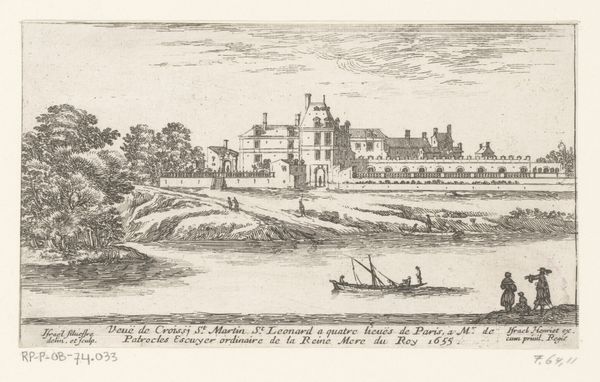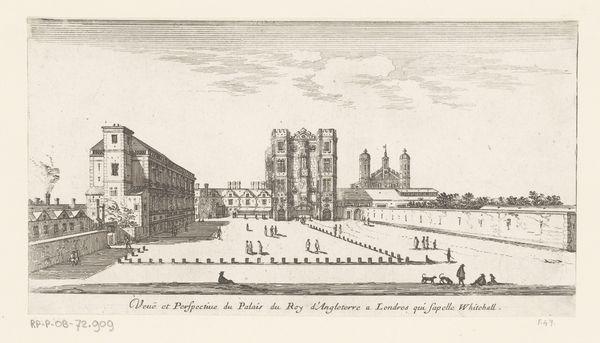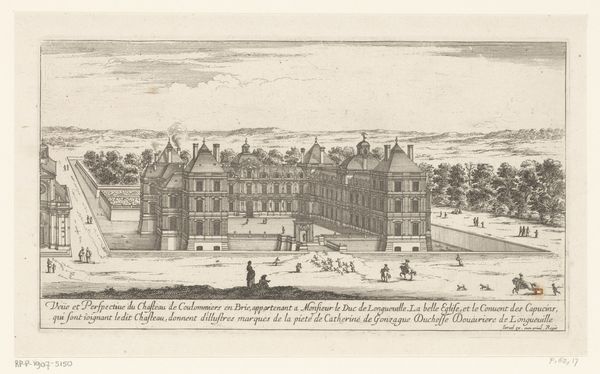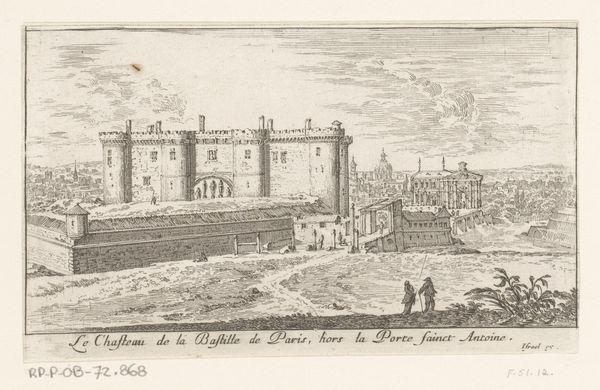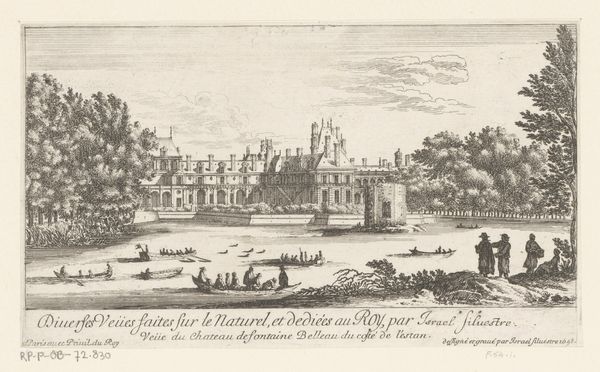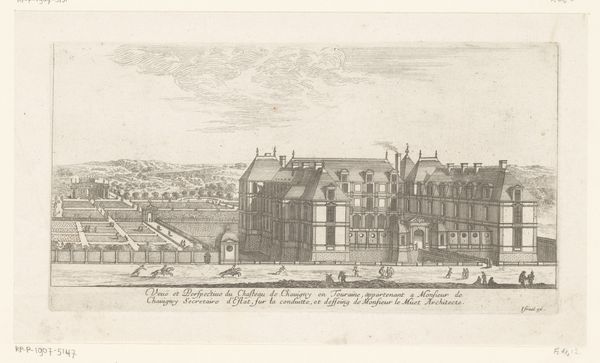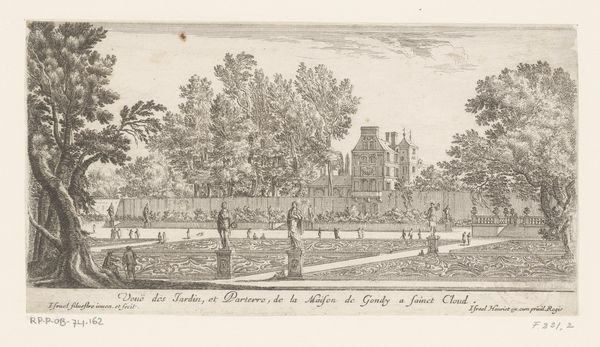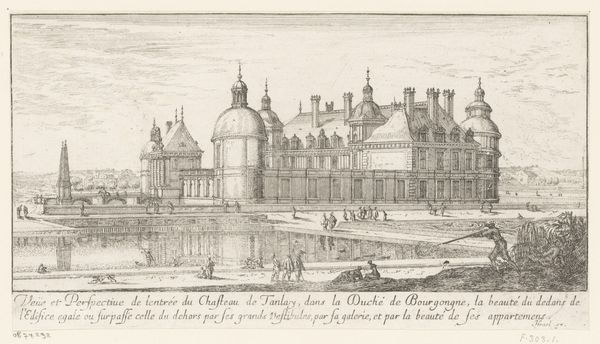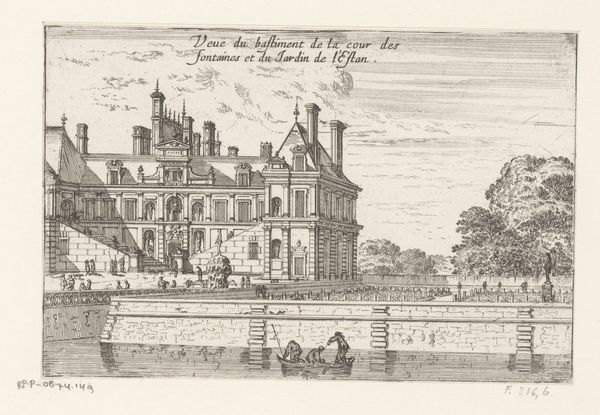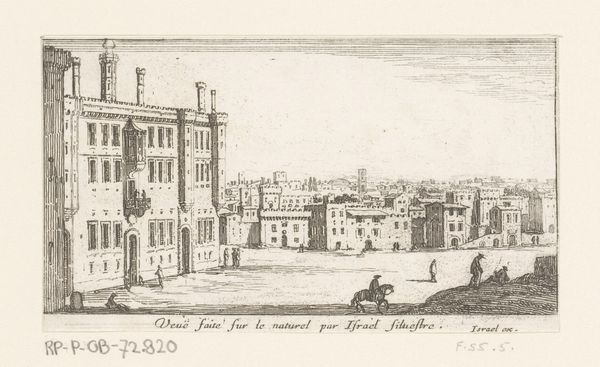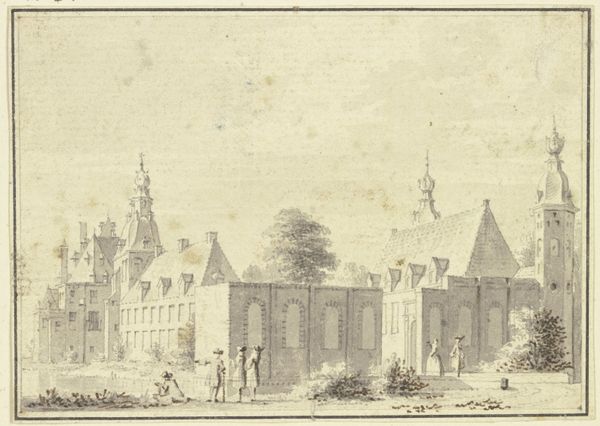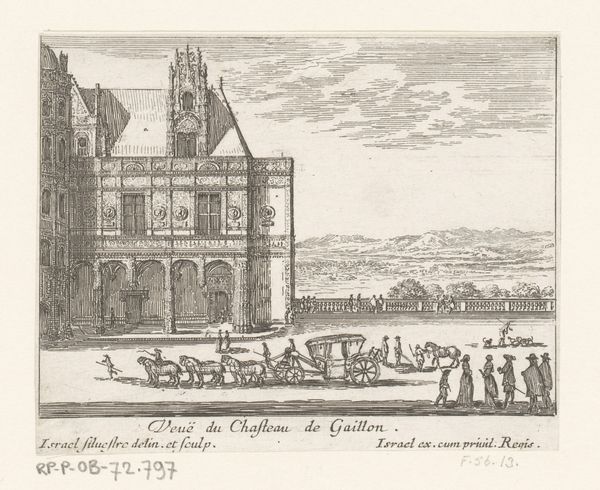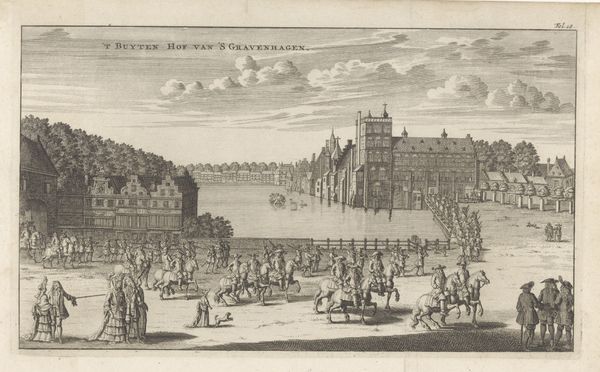
print, engraving, architecture
#
baroque
# print
#
cityscape
#
engraving
#
architecture
Dimensions: height 86 mm, width 118 mm
Copyright: Rijks Museum: Open Domain
This print of the chapel at Saint-Germain-en-Laye, was made by Israel Silvestre, sometime in the mid-17th century. As the inscription tells us, Silvestre was responsible for both the *delin*, the design, and the *sculp*, the carving of the image. His chosen medium, etching, was crucial to the print’s appearance. In this process, a metal plate is covered with a waxy ground, and the design scratched into it with a needle. The plate is then bathed in acid, which bites away the exposed lines. The result is a crisp, precise image, ideally suited to capturing architectural detail. But the technique also lends itself to mass production, aligning with the burgeoning print market of the time. This wasn't just about aesthetics; prints like these played a key role in circulating knowledge and solidifying political power, spreading the image of Louis XIV's kingdom far and wide. Silvestre’s meticulous approach thus reflects the era’s complex interplay of artistic skill, industrial potential, and the demands of statecraft.
Comments
No comments
Be the first to comment and join the conversation on the ultimate creative platform.
